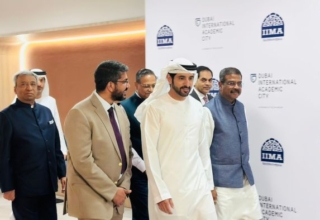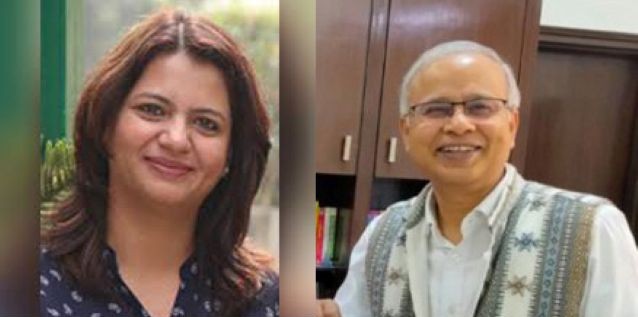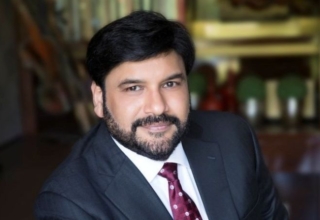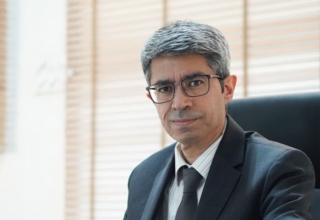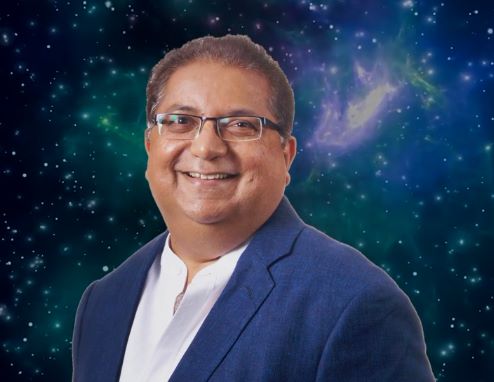
Sanjay Desai, Founder-CEO of ConsciousLeap (a platform offering (preventive) mental wellbeing courseware and interactive sessions on the principle of unlocking human potential with consciousness), has curated three programs based on this framework/curriculum for schools (Wellspire™, Make You Happen™ & Teachers wellbeing program). An alumnus of the University of Mumbai and IIM Bangalore, Desai, who is also a chartered accountant, after spending 13 years of his career as a banker with the Citibank and then switching over as a serial entrepreneur with tech companies such as Kairoleaf analytics and aurionPro Solutions, turned to productify his own learnings from a unique transformative spiritual journey that he was traveling parallelly. Autar Nehru in a conversation with him, attempts to understand ConsciousLeap’s leap into school education.
Your book ‘Jasmine Builds on Shifting Sands’ is the bedrock of ConsciousLeap, but its beginnings span much earlier than your own spiritual journey of years. Take us to the headwaters of your journey for setting the context.
It is a long story, but to give an overview, my own journey started from my association with Krishnamurti Foundation. On an assignment to Gaumukh (Uttarkashi) in 1992, I and my wife (Arti), still young and naïve, decided to go trekking in Kedarnath. In Kedarnath (not for religious reasons though), we insisted on going to Chorabari lake and midway we noticed one sannyasini coming out of a cave and performing Surya Namaskar. Out of curiosity despite her cautioning, we requested an audience with her. That was the moment our lives transformed. She became my Guru Maa (spiritual mentor) and her suggestion of experimenting and testing your self-beliefs, set me on a spiritual path that included self-awareness through meditation.
Tell us more about your Guru Ma?
After our initial encounter, we stayed in touch through letters and I made several trips to her cave where she treated me like a son. She (Ma Krishnananda Giri), a very captivating personality, gave no gyan (knowledge sermons) but through our conversations she encouraged me to manifest some of the thoughts coming to my mind without arguing, which were at times scary and at times powerful. She might have renounced the world when she was young and a successful national awardee teacher (initiated into sanyas by Anandamayi Ma) and she told me that she wanted to test her faith and chose to be alone in Himalayan cave. She continues to have influenced my thought process even today.
Coming to the birth of ConsciousLeap, was this also a response to some of the setbacks as an entrepreneur? A sort of refugee?
Yes, my learnings from my career and life, obviously are part of this formation. Most psychologists do agree that most of our actions, some say 99% of action plans are put in place by the brain overtime unconsciously and then we may be consciously executing them. Negativity associated with these actions is therefore inherent into this and cause of fear, stress and anxiety. We sabotage ourselves though nothing is deliberate. I also started realizing that limitations in our life in our unconscious mind and our tendencies are just to get bogged down by them. After seeing that mediation, self-awareness, and passionate hobbies can turn us into a positive person, I found managing gaps in real life work is possible to get out of the trap and motivate ourselves.
So, the book is all about this concept?
The underlying Make You Happen framework is a work of three years full of trial and error much like a pharma product R & D. I would like to mention and also credit Anand Kasturi, my coach, who pushed me into putting this framework into practice through workshops. As I didn’t want to theorize and present it before the world as such, I made a conscious decision to write it as a book of fiction. I took the whole topic where people are interested in manifesting dreams. My aim was to create a master in oneself and align him to the world by invoking both right and left brain. The question was how do I render it: as a theory or applied framework. So, the book was an expression of this framework, which we later adopted for our corporate training workshops.
From workshops for corporates, how did schools happen? Did Covid Pandemic influence your decision to venture into school space?
I would say Covid doesn’t have a direct role in this, but yes, the pandemic created more acceptance of wellbeing. We were conducting school workshops much before Covid and how we got invited to schools is also worth discussing. Our actual workshops started in 2016 and it was during these workshops that someone would have spotted its utility for senior secondary students and we got invited by schools, which were coping with the influx of social media and smartphones and affecting children in a big way. Having the virtual world in their hands divided their world into two, one the real world of parents and teachers and the other the virtual world where you can escape in no time. We realized that the children being on multiple platforms, switched between them. They have different avatars for each one of them. So, in this mad frenzy, it is easy to lose the sense of who we are. The children being young and vulnerable don’t know whom to look up to. The influencers in the virtual world are not people for success in your real life. This was a trend as we started speaking to more and more academicians. We borrowed from our corporate workshop format and tailor made it as a 4-8-hour workshop for students grades 9-11. That is how we initially landed up in schools.
And how did you decide to go for a regular 3-year course? And you chose to launch wellspire for children of 10 years, what was the rationale?
From our conversations with school leaders and academicians and their feedback after the workshops, it was clear they wanted a deeper engagement for a longer duration. That way the concept of wellspire emerged and was co-created by various academicians and schools with us. We did research & development and product investment for a couple of years. Earlier, when the Internet, smartphone and social media were not there, the society, the family, neighbors and relatives offered a layer of support for mental health and stressed times. This layer would express, advise and guide the affected. But with the virtual world boundless and most people addicted to social media, gaming, children in particular are not getting much parental attention. The peer pressure is exerting more influence than before and socio-emotional nurturing is going missing. It is manifesting as ADHD, aggressive behaviors, being shy and communication problems. And schools are facing these problems on a daily basis. And, schools and not families are the convenient and effective places to shoulder this responsibility. So, we thought that is the appropriate age to teach children about developing self-awareness and socio-emotional skills.
We also have a one-year program called Make You Happen™ for senior school students of age groups 15-18. We plan to add another year to this.
That brings to the content of this course and its classroom transaction besides how is it packaged for schools including pricing? And importantly, how did you arrive at the 20-week duration?
Our program as you said is a once in a week classroom program for 20 weeks. We supply a journal, which has activity and worksheets, which the children can interact with at their own pace and time. Teachers are just the facilitators (teachers are imparted half a day training for this). It develops both the sides of the brain as per our framework. The assessment is done at the end of the program through situational tasks and teacher feedback. This program is priced to be affordable for all sections of society, the annual charge being equivalent to just the price of a pizza/ a simple family meal.
As regards 20 weeks, it was schools, who after calculating and discounting the school working days, arrived at this duration. And, in our analysis, that is just the right amount of time for a course of this nature.
Let’s hear about your footprints?
We launched wellspire in 2022. Spring Dale schools, Lucknow, is the first school in the country where our curriculum is being taught, we are into 3rd year. In that sense, the school is sort of an anchor for our program. Last academic year, the program ran in 55 schools. This included state government run schools in Dehradun and Pauri in Uttarakhand and private schools in NOIDA, Ahmedabad, Surat, Lucknow Mumbai and Chennai. In all the programme was done with 3200 students. This year we have scaled up to new schools in these locations. We have also signed a MoU with the Uttarakhand government for running the Wellspire™ across the whole state. We’re in talks with other states as well.
I think we have created the right kind of vibes around our programs. School leaders are realizing this. Even government officials are realizing this. In fact, school associations such as Surat unaided school association, Swanirbhar Shala Sanchalak Mandal, Surat and Association of progressive schools Ahmedabad, have shown a lot of enthusiasm for this and as word spreads, we’re hoping for spreading to more schools in coming years.
You’re rolling out essentially a preventable mental health program that should get support from every stakeholder, so, how do you plan to quickly make it to more schools and more regions? Before you answer that, also tell us if this is a version of the Happiness Curriculum of the Delhi Education directorate?
Glad you brought that up. Our program complements the Happiness curriculum but is not a copy or substitute. Happiness curriculum is focused on mindfulness. We have self-awareness and success manifestation journey as the lynchpin of our approach. We are hoping governments, who are indeed interested in preventable mental health programs like ours, create the right kind of pathway for including it in school curriculum. Our limited experience has been a lack of budgets is what is holding them back. In Uttarakhand, our program is funded under CSR and it took us no time to convince the authorities. Private schools are surely responding as the word spreads. We are setting a milestone of 50 schools before we really scale up substantially and our hope also lies in CBSE and NCERT making such a course part of the curriculum, which will automatically take us to more schools. We are also readying the program for senior students and therefore look forward to lots of engagement with schools and students in the near future.




